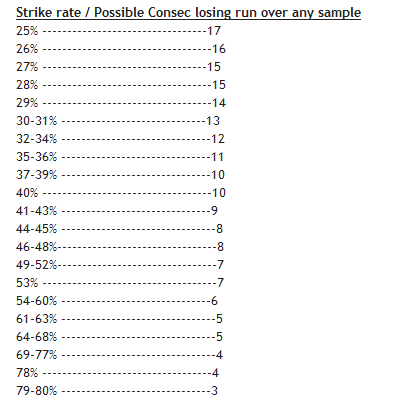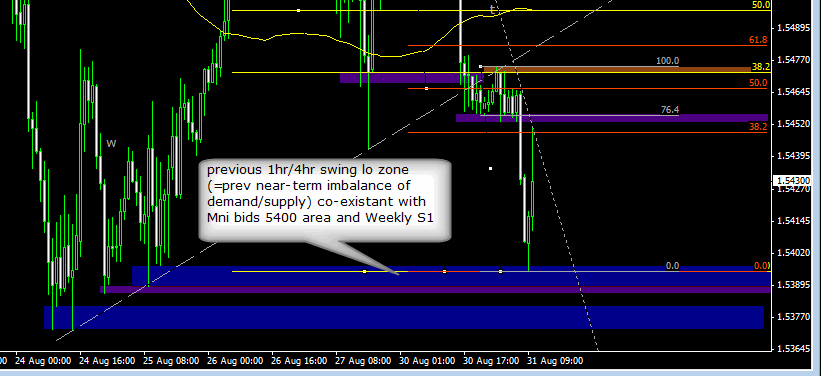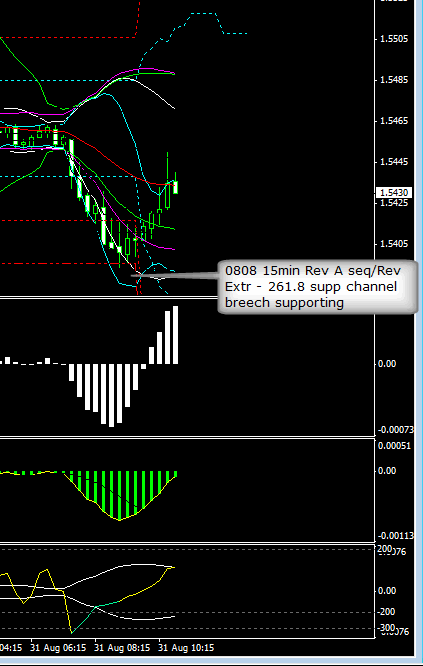4xpipcounter
Experienced member
- Messages
- 1,571
- Likes
- 30
bbmac, I've been reading some of your posts, and you have some solid maringing principles in place. I like that style, and maybe it is because mine is similar.
I monitor and trade 28 pairs. I am looking for entries into ones that are most likely to succeed in my forecasted direction, and yield the most pips. My margin is 10% on all my trades. A 100-pip gain is a 10% gain on my account, etc.
I also like how you point out the mathematical principle behind winning and losing trades, which is spot on. If you lose 20%, then you have to gain 25% to get back to the point of origination.
Excellent stuff!
I monitor and trade 28 pairs. I am looking for entries into ones that are most likely to succeed in my forecasted direction, and yield the most pips. My margin is 10% on all my trades. A 100-pip gain is a 10% gain on my account, etc.
I also like how you point out the mathematical principle behind winning and losing trades, which is spot on. If you lose 20%, then you have to gain 25% to get back to the point of origination.
Excellent stuff!
Fleshing out what I was saying in my post above: The table below shows the 1% chance of the size of consecutive losing run over any 500set-up sample:
So consider the possible depletion of your a/c at the given historical strike rate of your trading edge...Let's for the sake of argument say a trading edge has a 53% strike rate (ie winners as a % of total)...and that a consecutive losing run occurs of 7...at 2% risk per trade, you have to ask yourself whether a loss of 14% would be catastropic to you, Remember too that a consec losing run could be followed by a couple of winners and another consec losing run of 2-3-4-5 which are common given this strike rate of 53%...so that actually this loss could quickly in practice go to 20% or more at such a 2% risk/trade. Are you comfortable see-ing your a/c deplete by 20%...is it a 'catastrophic loss ? By catastrophic I mean the following;
Theortically it should be possible to make money in trading from an arbitrary entry so long as the correct risk:reward strategy is employed and adhered to. Even without an arbritary entry employing say a 3:1 risk:reward ratio on a 33% strike rate (winning trades as a % of total trades) would over any sample of entries, prove profitable. It is rightly said that it is not the entry, but the exit that makes the money.
But here's the thing...when in a trade it is common to experience discomfort and the body communicates that to our brains, resulting in the all too common response to ending that discomfort...by exiting the trade early. (Our bodys react to perceived dangers by preparing to 'Fight or Flee.' )
In trading a lower strike rate system/methodology there are naturally more losing trades and crucially more consecutive losing trades. Our brains remember past losses and irrationally place more emhasis on them than the winners, resulting in it fearing more losses to come. It's mechanism to protect us from this discomfort is to secrete adrenaline and noradrenaline (which comes from the adrenal glands above the kidneys.) The release of these hormones results in the body increasing the flow of fatty sugars through the liver which causes the feelings of discomfort resulting in a much decreased ability to make objective judegements. To put it another way;
'..Your Neo-Cortex (the thinking part of your brain) shuts down and the survival mechanism in the middle and lower more primitive parts of the brain take over. As a result you can react to things and stop thinking things through rationally. Basic emotions like fear and anger take over from more complicated sophisticated higher function emotions.'
So our ability to adhere to strict risk:reward ratios necessary to ensure overall net profitability with a lower strike rate system is severely impaired with the greater number of losses and consecutive losses with this type of trading system. The greater the consecutive run of losses the greater the impairment, and again, crucially, the less experience/understanding one has of this, the greater the discomfort one might experience resulting in non-adherence with the critical risk:reward ratio.
Further to this, such a consecutive run of losing trades can also interfere with the ability to actually place the next trade when the trading edge presents itself, fearfull of further losses, thus interfering with the natural flow of probability upon which all trading edges rely.
Physical discomfort and Fear are powerful debilitating factors on the ability to profit from a trading edge.
Remember too that, following the example above a 20% depletion of a/c requires a gain of 25% to recover the a/c to starting bal. Ie 25% of the 80% (100%-20%) remaining a/c bal.
My rather long winded point is that every known eventuality and contingency has to be caterered for in your trading plan including the likely depletion of a/c at the strike rate being experienced and risk used, and your ability to recover from it, lest it turn into the 'death spiral' common to many a/c's.
G/L




